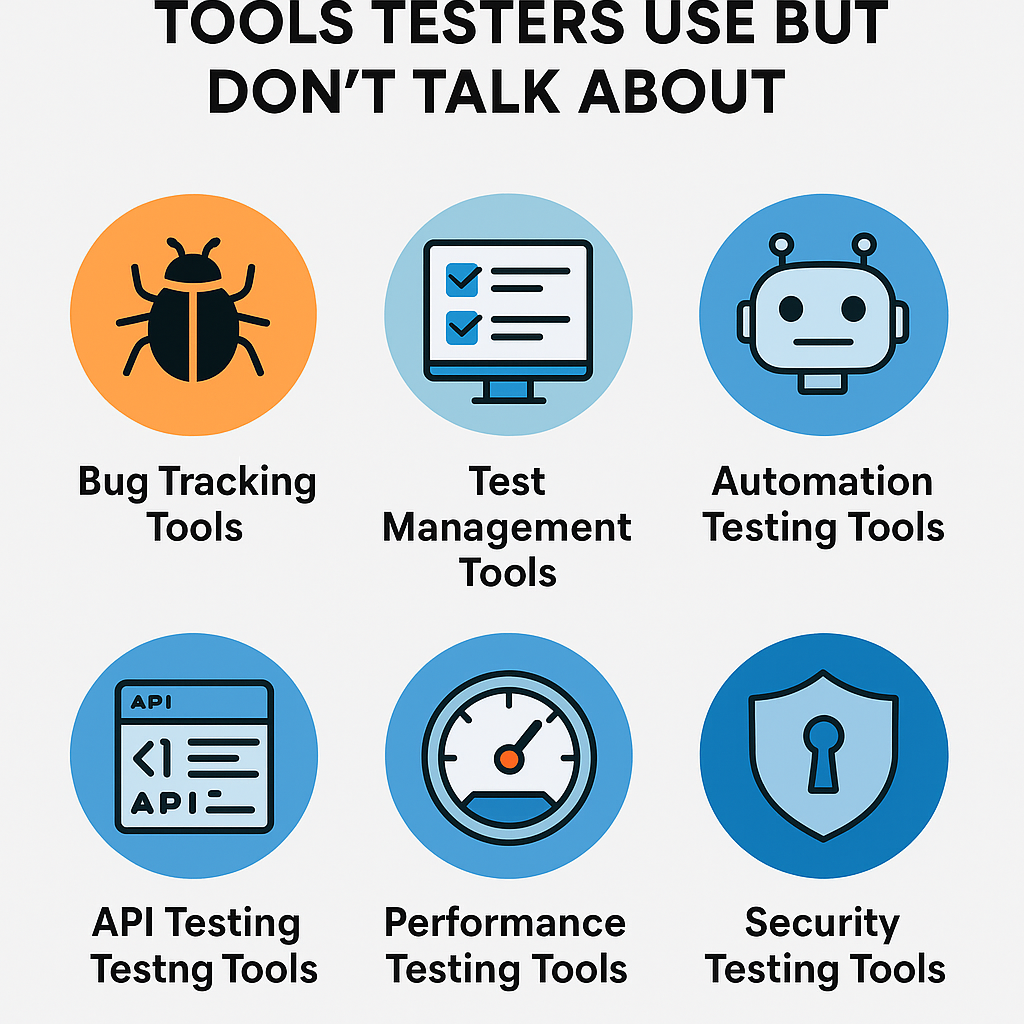In today’s digital world, securing user registration forms is crucial for E-commerce platforms. Ensuring a secure user registration process helps build trust and protects sensitive customer data. This article is specifically designed for manual testers, guiding them through essential practices for conducting user registration security testing on E-commerce sites, highlighting both best practices and the benefits.
Why Security Testing is Critical for User Registration
User registration is often the entry point for attackers looking to exploit weak spots in an E-commerce system. Registration forms collect sensitive data, such as email addresses, passwords, and personal identification. Failing to secure this data could lead to severe security breaches, loss of customer trust, and even potential legal ramifications. Manual testers play an essential role in identifying these vulnerabilities.
Here’s why security testing is essential for the user registration process:
- Data Protection: It ensures that personal data, such as emails and passwords, are safely encrypted.
- Prevents Fake Registrations: Security measures like CAPTCHA help prevent bots from creating fake accounts and clogging up the system.
- Trust Factor: When users know their personal data is safe, they’re more likely to stay loyal to your platform. Security builds customer trust!
Also read about What skills and knowledge should a software tester have regarding SQL?
Key Vulnerabilities in User Registration
- SQL Injection – Attackers could exploit vulnerabilities by injecting malicious SQL queries, which could compromise user data. Manual testers should attempt to input various SQL commands to identify weak spots.
- Cross-Site Scripting (XSS) – Weak input validation might allow attackers to insert harmful scripts that could be executed in users’ browsers. Manual testers should focus on identifying inputs that are not properly sanitized.
- Weak Password Policies – Allowing simple or predictable passwords makes it easy for attackers to compromise accounts. Manual testers must ensure that password requirements are enforced strictly.
- Session Hijacking – Improper session management can result in session hijacking attacks, compromising the user’s account. Manual testers should test for proper session handling mechanisms.
Best Practices for Secure User Registration
1. Input Validation
Ensure that all input fields, such as username, email, and password, have strict validation rules in place. By doing this, you reduce the risk of SQL injections or XSS attacks. Manual testers should attempt a variety of inputs, including special characters, to ensure that the validation rules are effectively enforced.
2. Implement CAPTCHA
Using CAPTCHA on the registration page can help prevent automated scripts from creating multiple fake accounts, thereby minimizing bot attacks. Manual testers should verify the implementation of CAPTCHA and test whether it effectively blocks automated attempts.
3. Email Verification
Email verification helps ensure that the user has access to the email address they register with. This also adds an additional layer of authenticity to the process, preventing fraudulent registrations. Manual testers should check whether the email verification process is triggered and cannot be bypassed.
4. Strong Password Policy
Enforce a strong password policy, requiring users to include a mix of uppercase letters, lowercase letters, numbers, and special characters. This will help protect against brute-force attacks. Manual testers should attempt to register with weak passwords to verify that the policy is enforced.
5. Rate Limiting
To mitigate the risk of brute-force attacks, implement rate limiting on registration attempts. If there are multiple failed registration attempts from the same IP address, block the IP or introduce a cool-down period. Manual testers should test multiple failed attempts to confirm that rate limiting is functioning correctly.
6. HTTPS Encryption
Use HTTPS to encrypt data transmitted between the user and the server. This ensures that sensitive information, such as passwords and personal details, remains protected from interception. Manual testers should verify that the registration page and all associated data transfers use HTTPS.
7. Error Message Management
Avoid providing detailed error messages during registration failures. An error message like “Username already exists” can give attackers useful information. Instead, use generic error messages such as “Something went wrong, please try again.” Manual testers should verify that no sensitive information is revealed in error messages.
Also read about How to test SQL injection as Manual tester?
Disadvantages of Not Performing Security Testing
Now, let’s flip the coin. What happens if you skip security testing? The consequences are, well, not so pretty:
- Data Breaches: Sensitive information like emails, passwords, and even payment info could be stolen.
- Fake Accounts Overload: Without protection, bots could flood your platform with fake registrations, which could lead to chaos!
- Loss of Trust: Customers expect their data to be secure. If they sense vulnerabilities, they’ll abandon the platform faster than you can say “security breach.”
- Legal Trouble: Failing to protect user data can land you in hot water with data protection authorities.
“Once user trust is broken, it’s almost impossible to get it back,” warns an security expert. You don’t want that, do you?
Manual Security Testing Checklist for User Registration
- SQL Injection Testing: Try injecting SQL commands into input fields to test for potential vulnerabilities.
- Cross-Site Scripting (XSS) Testing: Enter malicious JavaScript code to check if the system properly escapes it.
- Password Strength Verification: Attempt to create accounts using weak passwords to verify that the password policy is being enforced.
- Email Verification Bypass: Test if the system requires the user to verify their email address before accessing sensitive sections.
- Brute Force Attack Simulation: Manually attempt to perform a brute-force attack and validate whether rate limiting is in place.
Best Practices for Securing User Registration
Here are some golden rules to follow:
- Enforce Strong Password Policies: Make sure users are creating strong passwords. No “123456” allowed here! 🔒
- Use CAPTCHA: Keep those pesky bots at bay by adding CAPTCHA to your registration form.
- Implement Two-Factor Authentication (2FA): Add an extra layer of security. Even if someone steals a password, they’ll need a second piece of information to access the account.
- Encrypt Everything: Make sure all sensitive data is encrypted both in transit and at rest.
“Encryption is the lock, and the key is in your hands,” says one of lead developers.
Benefits of Security Testing in User Registration
- Enhanced Trust: Users feel secure when they know their information is safe, leading to higher trust and loyalty.
- Regulatory Compliance: Ensuring secure user registration can help in complying with various data protection regulations, like GDPR.
- Reduced Fraud: Proper security measures help in minimizing the creation of fraudulent accounts, which is common in E-commerce platforms.
- Better User Experience: A secure platform ensures users don’t have to worry about their information being compromised, contributing to an overall positive experience.
Real-World Test Cases with test data for User Registration
| Test Case ID | Test Objective | Test Steps | Test Data | Expected Result |
|---|---|---|---|---|
| SEC_UR_01 | Test password complexity at registration | Input weak and strong passwords | Weak Password: 12345, Strong Password: S@fE2021! | Weak password rejected, strong password accepted |
| SEC_UR_02 | Test SQL injection in username field | Enter SQL commands in username field | SELECT * FROM users WHERE username = 'admin' | SQL injection blocked, error displayed |
| SEC_UR_03 | Validate email input | Enter valid and invalid email addresses | Valid Email: john.doe@example.com, Invalid Email: invalid@com | Invalid emails rejected, valid email accepted |
| SEC_UR_04 | Test CAPTCHA functionality | Submit registration form multiple times using bots | User: bot_user, CAPTCHA: Skipped | Bots prevented from submitting form |
| SEC_UR_05 | Test brute force attack prevention | Attempt multiple registrations with same username | Username: jane_doe@example.com | Registration blocked after several attempts |
| SEC_UR_06 | Test for XSS vulnerabilities | Inject script in registration fields | <script>alert('Hacked!')</script> | Script blocked, input sanitized |
| SEC_UR_07 | Test email verification process | Register without verifying email | Email: new_user@example.com | Account inactive until verification completed |
| SEC_UR_08 | Test data encryption at registration | Inspect network traffic during registration | Username: secure_user, Password: S@fE2021! | Data encrypted using SSL/TLS |
| SEC_UR_09 | Test registration with special characters | Enter special characters in username field | Username: !@#johndoe, Email: john@example.com | Special characters rejected, error displayed |
| SEC_UR_10 | Test session expiration during registration | Leave registration process idle for 10 minutes | User: timed_out_user | Session expires, data cleared |
Conclusion
Security testing for user registration is a critical aspect of maintaining an E-commerce platform’s integrity. Manual testers play a crucial role in identifying vulnerabilities and ensuring that every layer of the registration process is secure. By following the best practices listed here, you can make significant strides toward enhancing the security of user registration on your platform.
For manual testers, adopting these strategies not only ensures a secure user experience but also demonstrates the value of proactive security measures in building trust with customers.
E-commerce user registration security best practices for manual testers,Manual testing for e-commerce registration vulnerabilities,Secure user registration testing for e-commerce platforms,How manual testers can secure user registration forms on e-commerce websites,Best practices for manual security testing of e-commerce platforms












